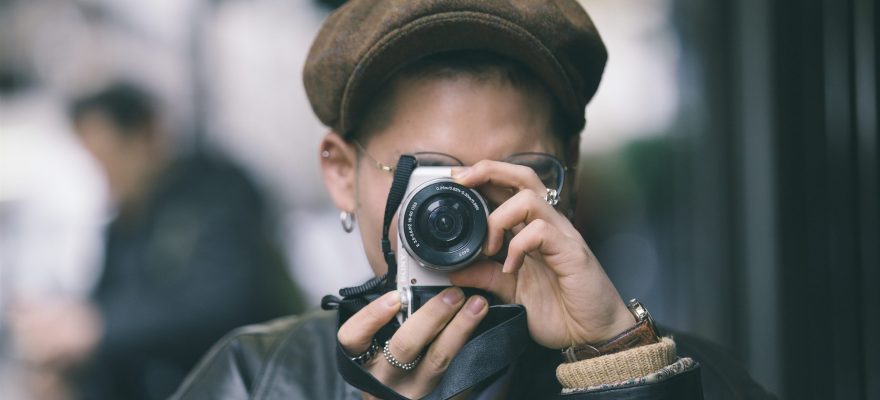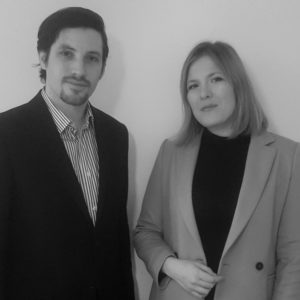

Sébastien Lachaussée & Elisa Martin-Winkel
Inventory of the protection of photographs by French Intellectual Property
In May 2023, the Paris Court of Appeal refused to grant copyright protection for lack of originality, to a selfie of an influencer who complained that a company of the fashion sector was using a similar photograph (CA, Paris, May 12, 2023, n° RG 21/16270).
This judgment, which relates to a practice that has become usual, highlights the issues raised by the protection of photographs and that the democratization of this media opened the door to a very extensive amount of case law.
1 – The main criterion of originality
In France, the protection of photographs by copyright is a matter of common law and the principle is that a photograph is protected by copyright if it is original, i.e. if it reflects the personality of the author and is the result of a creative intellectual process.
The Court of Justice of the European Union has also ruled that a photograph is likely to be protected by copyright if it constitutes « an intellectual creation of the author reflecting the personality of the latter and manifested by the free and creative choices of the latter when making this photograph » (CJEU, 1 Dec. 2011, Aff. C-145/10 ).
In this respect, the method the photographer uses or the medium chosen does not matter and – no distinction is made between film and digital camera, computer file or paper print photographs.
Also in principle, merit is irrelevant, even if isolated decisions may refer to the talent or notoriety of the photographers in their analyses.
Finally, the destination of the photograph is also irrelevant, even if certain uses may exclude protection, particularly in the case of banality of photographs.
2 – Exclusion of choices imposed on photographers
The choices imposed on the photographers do not allow to characterize the originality of the photographs they made accordingly.
This is the case with the choices imposed by the technique or by the subject of the shots.
In terms of techniques, we can mention image reproduction systems or automated tools such as photo booths or radars, which do not allow the photographer to make a choice.
In the same way, taking photographs in « burst » mode makes it difficult to allow copyright protection, especially in the context of sports or public events. This is particularly the case when «photographers were stationed at the places imposed on them, and not by reasoned choice, and acted according to the continuous shutter release technique known as « burst shooting », or by limiting themselves to installing a lens at the rear of a vehicle equipped with a photographic shutter release » (Cass. 1re civ., 3 Feb. 2004, n° 02-11.400).
Again, rejections are frequent for the photographs taken by the paparazzi in view of their « purely passive behavior » solely setting up the camera while waiting for the appearance of their subjects ( CA Paris, 4th ch. A, 5 Dec. 2007, No. 06/15937 )
Some subjects can also make protection difficult, especially when the photographer is trying to faithfully reproduce reality.
The lack of originality has in certain circumstances been noted in the case of “snapshots taken ‘on the spot’ during sporting, political or social events, the composition of the photograph being dictated to the photographer by the event itself, or even by the space reserved for the press by the organizer of the event, without any possible choice of staging, posing or lighting for the photographer” (Paris Court of First Instance, 3rd Chamber, 1st Sect., March 21, 2019, No. 18/10823).
Originality is also frequently denied for advertising shots, especially for representations of « Packshots » products, which are the result of technical know-how rather than a creative process. Thus, if the photographs are limited to a faithful reproduction of the object and « obey technical imperatives justified by the necessary enhancement of the products for the purposes of sale and the restitution of a faithful image », they are not original (TGI Paris, 3rd ch., 29 Jan. 2016 : RLDI Feb. 2016, n° 391).
Set photographs are also subject to difficulties in establishing a creative contribution of the photographs, as the director of the film or play has generally chosen the lighting, sets, costumes, posture of the actors, etc.
However, protection is possible because « if the on-set photographer who has no choice of the place, the time when the photo is taken, the frame, the position of the characters, or the lighting, made by the authors of the cinematographic work, cannot claim the status of author, the situation is different when he makes technical choices, aesthetic and artistic activities independent of realization » (Paris Court of Appeal, 4th Chamber, 20 Feb. 2008 : RIDA Oct. 2008, p. 504).
In particular, the photographer can demonstrate that he or she has distanced himself from the « artistic intentions of the director » (CA Paris, pôle 5, 2e ch., 13 Apr. 2012, n° 11/07430 ) or that he was « at the origin of the installation of the photograph by capturing a scene that does not correspond to any sequence in the film” ( CA Paris, pôle 5, ch. 1, 14 March 2017, n° 15/19495 : about a photograph taken on the set of “A bout de souffle” )
3 – Demonstration of the photographer’s creative choices
The judges are constantly striving to analyse the photographer’s creative process, considering all the production stages: before, during and after the shooting.
The preparation period may include the choice of models, sets and locations, accessories, but also equipment and technical characteristics: cameras and lenses, aperture and shutter speed, lighting or filters.
Technical choices are then considered if they are not a matter of know-how. As an example, the work on light, « its sources, its direction, the search for effects, reliefs » (Paris Court of Appeal, pole 5, 2nd ch., 16 September 2011.) can be a proof of the photographer’s creativity by creating contrasts, backlighting, shadows etc.
When photographing, the photographer must have made concrete choices that are not implied by technical imperatives, such as those seen above in burst photographs or determined by the location given to the photographers of an event.
The photographer’s biases can then result from the angle of the shot: high-angle, profile, etc. but also elements included in the frame.
To illustrate, for photographs taken during a concert, a photographer was able to argue that he had « made arbitrary choices as to the moments he decided to capture, the angle of the shots, the framing and then the cropping of the photographs, giving them a personal and original character corresponding to what the photographer wished to transcribe into images of the concert » ( CA Paris, pôle 5-1, 25 janv. 2023, n° 21/05914).
A posteriori work, in terms of printing and retouching, is also considered, whether it is a question of colorimetry, contrasts, saturation, removal of elements or cropping.
On this last point, the most famous example is that of Che Guevara’s photograph attributed to Korda for which the photographer has chosen to « remove the photo from the context in which it was taken in order to powerfully reproduce certain traits of the character of the photographed subject » by isolating the main character from the group of people (CA Paris, Pole 5, 2nd Chamber, 21 May 2010, No. 08/20959).
However purely technical retouching « facilitated by the use of digital photographic retouching software » ( Paris Court of Appeal, Pôle 5, 1st Chamber, 14 Nov. 2012, No. 11/03286 ) having ‘the sole effect of lightening the general colors, playing on the contrasts of light, refining the model’s skin texture and erasing irregularities, adding make-up’ ( Paris Court of Appeal, Pole 5, ch. 1, 7 Apr. 2015, n° 13/21690 ) are not creative choices.
Finally, in their analyses, the courts will frequently take into account the condition of ‘novelty‘ by comparison with earlier or later photographs (Paris Court of Appeal, pole 5, ch. 2, 6 Dec. 2019, no. 18/16512) to ensure that the photograph does not constitute ‘the banal reuse of a common canvas that cannot be appropriated‘. TGI Paris, 3rd ch., 1st sect., 8 Nov. 2018, n° 15/02536
In the case of the selfie, the court noted that « the ‘selfie’ (that the influencer) opposes appears to be limited to reproducing the artificial lighting of the elevator in which it is carried out without any other intervention » and notes that the practice is very common among influencers, comparing this to different Instagram accounts and previous shots.
The court adds that the act of photographing oneself, in an elevator with one’s dog, by means of the selfie technique is a common practice among influencers, based on several Instagram accounts of well-known influencers, whose relevant selfies predate the selfie at issue.
In the light of the foregoing, it appears that the protection of photographs by copyright presupposes an in-depth study of the photographs in question, the conditions of their creation and the antecedents that may exist. To carry out this study, it is recommended to resort to a specialized lawyer.
SHARE THIS ARTICLE
CONTACT
OUR OFFICES
INFORMATION
sl@avocatl.com
PHONE
+33.1.83.92.11.67
Address
11 rue Sédillot
75007 Paris
Follow us :
Newsletter
Please enter your e-mail :
